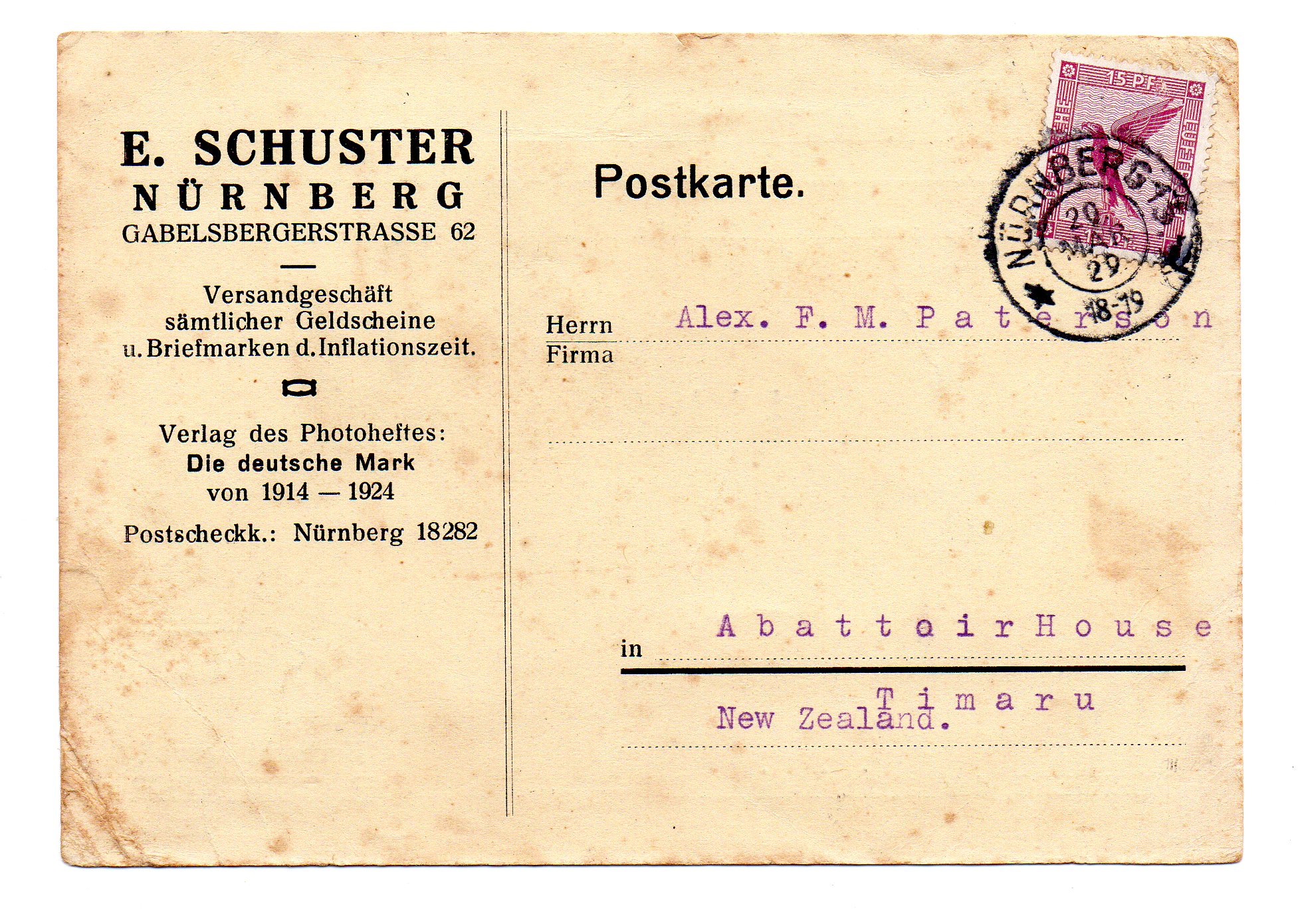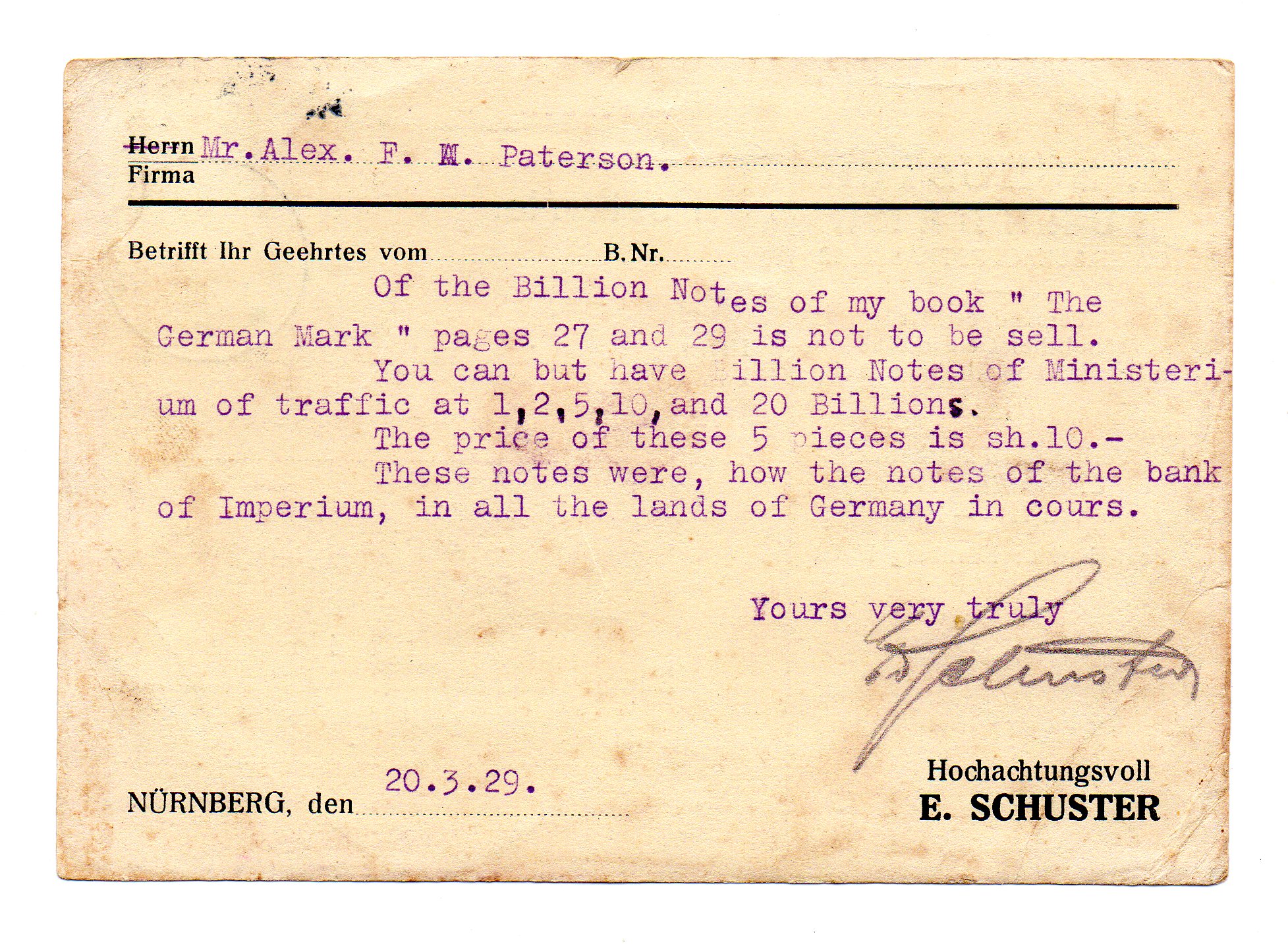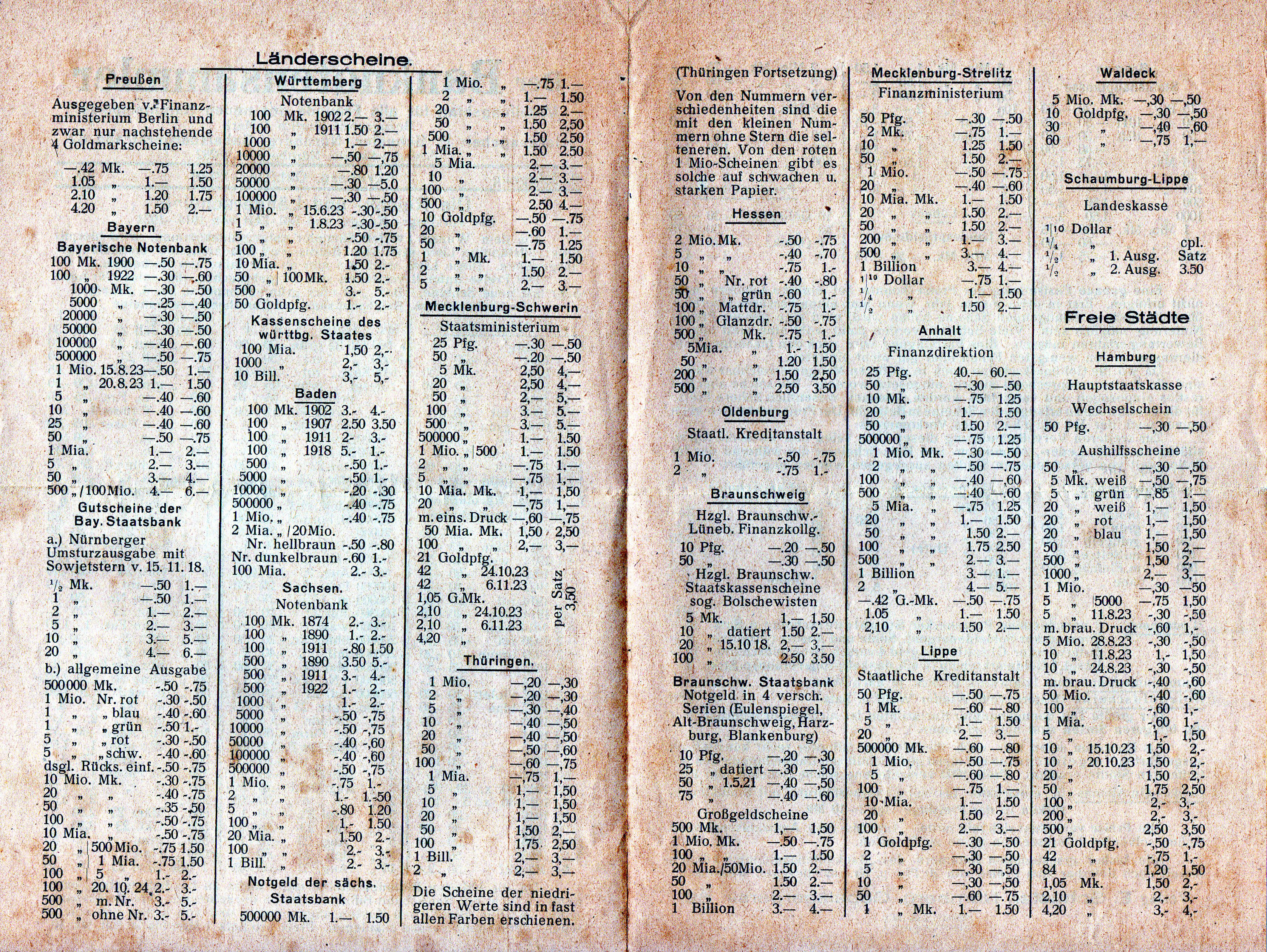Research shows that it would have been better for Mr Paterson, or more likely his heirs, to have invested in a 10 Shilling note circulating at that time in New Zealand. Any of the following issues from Bank of New Zealand, Commercial Bank of Australia, National Bank of Australia or Union Bank of Australia kept in strict UNC condition would be worth thousands of US$ in comparison with the set of Reichsbahn currency which would probably be difficult to sell in an auction for anywhere near US $100.
In terms of purchasing power, one can see that airmail postage costs for the postcard on March 20, 1929 was M 0.15. To send the same card today from Nurnberg to Timaru would cost Euro 0.95. The two most expensive items on the list: Pick 64 - the "Mourning Note" and Pick 65 - the "Egg Note" are listed at 30 and 10 Marks respectively. Recent results, as obtained from Track & Price, have Pick 64 yielding US $102.50 in PMG 64 EPQ in a eBay sale on 20 August 2018. For Pick 65 a more recent price result was for a Heritage Auctions sale dating 7 May 2019 where the note obtained US $77 in PMG 66 EPQ. It probably would have been better keeping the money in the circulating medium at the time: Pick 170 10 Rentenmark 1925, which scarcely appears on the market and would probably yield over US $1000 in graded uncirculated condition, or Pick 175 10 Reichsmark 1924 which would probably go for a similar amount.
The final page of the price list exhorts potential collectors to purchase these types of items as price information on available notes is not yet complete and that "a cheapening of prices would occur only in seldom cases or not at all".
Interesting are the offerings of Silk, Cloth, Velvet, Leather, Aluminium and Wooden Notgeld. Modern Notgeld and general currency collectors have pushed these types of items to a price level that would constitute a reasonable return to buying these types of items in late 1928.
Mass produced city Notgeld that is still commonly available in bulk and other lots and is generally traded at present at less than a Dollar each was offered on this list at 1000 pieces for 10 Mark or 1 pfennig per note. Maybe this was the best deal of this list. Also it would run contrary to the commonly expressed opinion that one should buy the "expensive item" first as these are generally scarcer and would likely hold their values better than cheaper and far commoner material. I think it is more accurate to say that it all depends; one's return - what one has to pay for a particular object...



